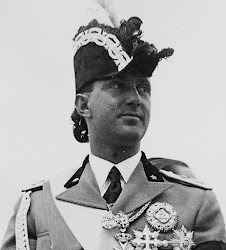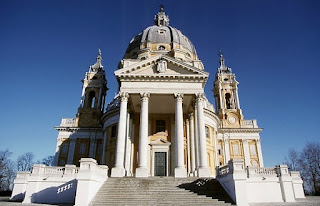Heir to the last King of Italy spent his life in exile
_(cropped).jpg) |
| Vittorio Emanuele, Prince of Naples, the only son of Italy's last monarch, died at the age of 86 |
He had to leave Italy when he was nine years old following the constitutional referendum held in Italy after World War II. The referendum affirmed the abolition of the monarchy and the creation of the Italian republic in 1946.
Umberto II had been King of Italy for just over a month and was afterwards nicknamed the May King. He had been de facto head of state since 1944, after his father, King Victor Emmanuel III, had transferred most of his powers to him.
Umberto lived for 37 years in exile in Cascais on the Portuguese Riviera. He never set foot in his native Italy again as he, and all his male heirs, were banned from Italian soil.
His only son, Vittorio Emanuele, spent most of his life exiled from Italy and living in Switzerland. He married a Swiss heiress and world-ranked water skier, Marina Doria, in 1971. They had one son, Prince Emanuele Filiberto of Savoy, Prince of Venice, who was born in 1972.
 |
| Umberto II was King of Italy for just over a month before being exiled |
During his exile from Italy, Vittorio Emanuele was tried for murder in France after an incident on his yacht while it was in French waters. He claimed he had fired his gun at a burglar, but the shot accidentally killed someone on another yacht. He was cleared of unlawful killing but convicted of a firearms offence.
Vittorio Emanuele was also once arrested on charges of criminal association, racketeering, conspiracy, corruption, and exploitation of prostitution, but was acquitted on all charges after a trial started in Potenza.
He was finally able to return to Italy in 2002 after the law barring members of the royal family from entering Italy was repealed. Along with his wife and son, he had a 20-minute audience with Pope John-Paul II at the Vatican.
Vittorio Emanuele died in Geneva on 3 February 2024 at the age of 86. His funeral was held on 10 February at Turin Cathedral and was attended by representatives of other European royal families, including Queen Sofia of Spain and Prince Albert of Monaco.
His ashes were interred in the royal crypt at the Basilica of Superga, the traditional burial place of the House of Savoy.
His heir is Emanuele Filiberto, Prince of Venice, who announced last year that he intends to renounce his claim to the throne of Italy in favour of his eldest daughter, Princess Vittoria of Savoy.
 |
| Palazzo Madama, once home of the Turin senate, is one of the palaces at the heart of 'royal' Turin |
Turin, the capital city of the region of Piedmont, has some fine architecture, which illustrates its rich history as the home of the Savoy Kings of Italy. Piazza Castello, with the royal palace, royal library, and Palazzo Madama, which used to house the Italian senate, are at the heart of ‘royal’ Turin. Turin’s Duomo - the Cattedrale di San Giovanni Battista - was built between 1491 and 1498 in Piazza San Giovanni, on the site of an old Roman theatre. Some members of the House of Savoy are buried in the Duomo, which is most famous as the home of the Turin Shroud - believed by many to be the actual burial shroud of Christ - which is kept in the Chapel of the Holy Shroud, added in 1668.
Book your stay in Turin with Booking.com
 |
| Filippo Juvarra's magnificent Basilica di Superga looks down on Turin from the top of a hill |
The Basilica of Superga, where Vittorio Emanuele’s ashes are interred, was designed by Filippo Juvarra, the Baroque architect from Sicily who built or contributed to many churches in Turin. Construction at Superga began in 1717 and the basilica, commissioned by Victor Amadeus II of Savoy, the future king of Sardinia, was consecrated in 1731, fulfilling a pledge Victor Amadeus had made to mark his victory over the French in the Battle of Turin, during the War of the Spanish Succession. The basilica’s elevated position on top of Superga hill, with a colossal dome rising to 75m (246 feet), means that it often sits serenely in sunlight while mist shrouds the city below. It can be reached by a steep railway line, the journey taking about 20 minutes. Superga, sadly, has a modern association with tragedy for the people of Turin after a plane carrying virtually the entire Torino football team, who were champions of Italy at the time, crashed into a wall at the back of the basilica in May 1949, killing all 31 people on board.
More reading:
Valentino Mazzola, an Italian great who perished at Superga
The 16th century Duke who made Turin the capital of Savoy
Filippo Juvarra, the Baroque designer who influenced the look of 'royal' Turin
Also on this day:
1602: The birth of painter Michelangelo Cerquozzi
1799: The death of scientist Lazzaro Spallanzani
1923: The birth of film and opera director Franco Zeffirelli
1944: The birth of actress and singer Claudia Mori
(Picture credits: Palazzo Madama by Lurens; Basilica di Superga by M Klueber; via Wikimedia Commons)







